






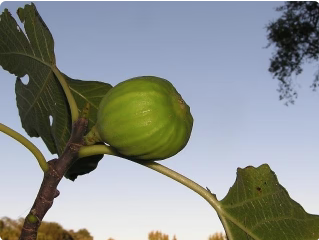

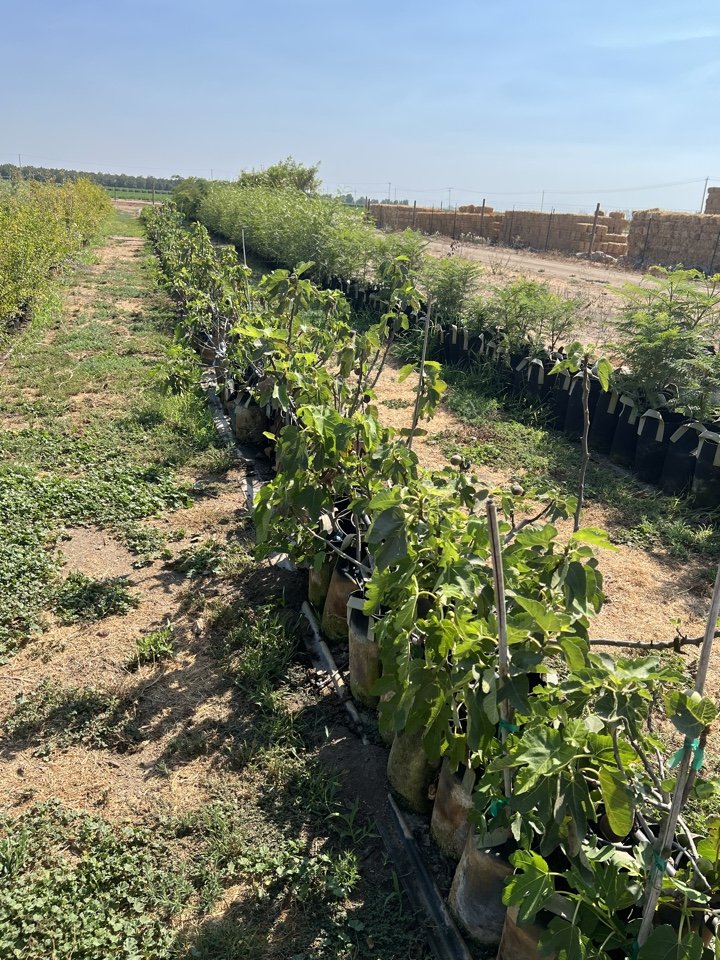
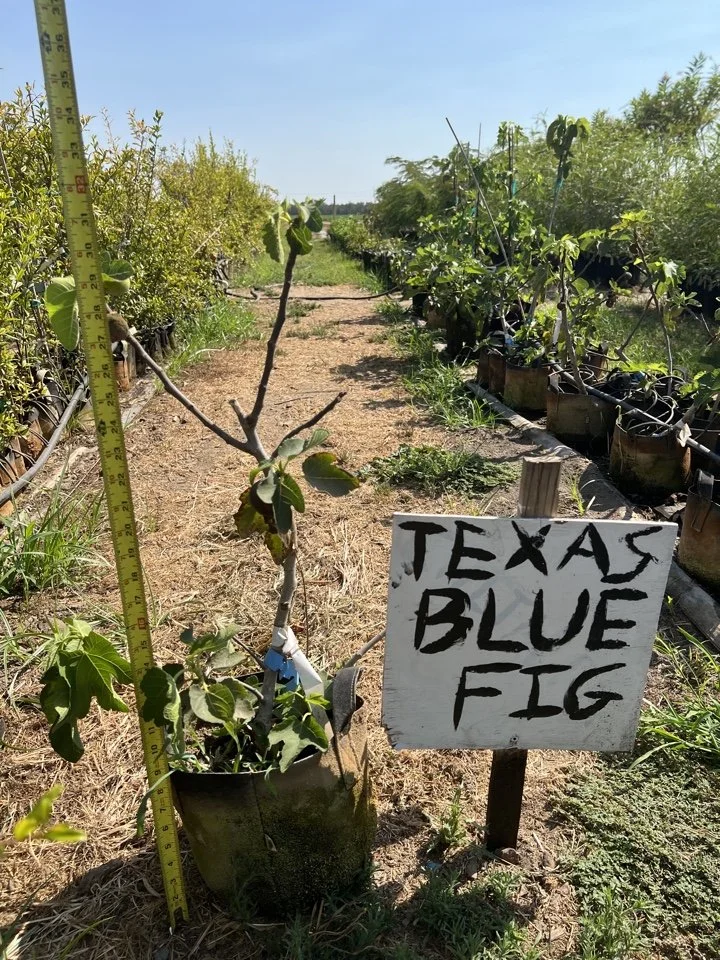

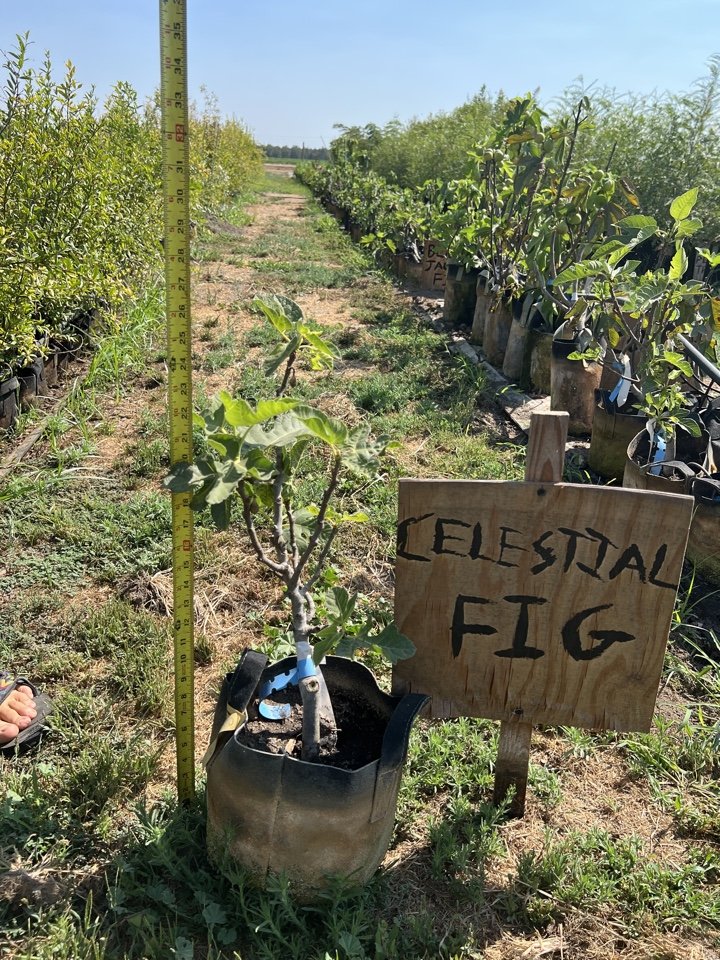
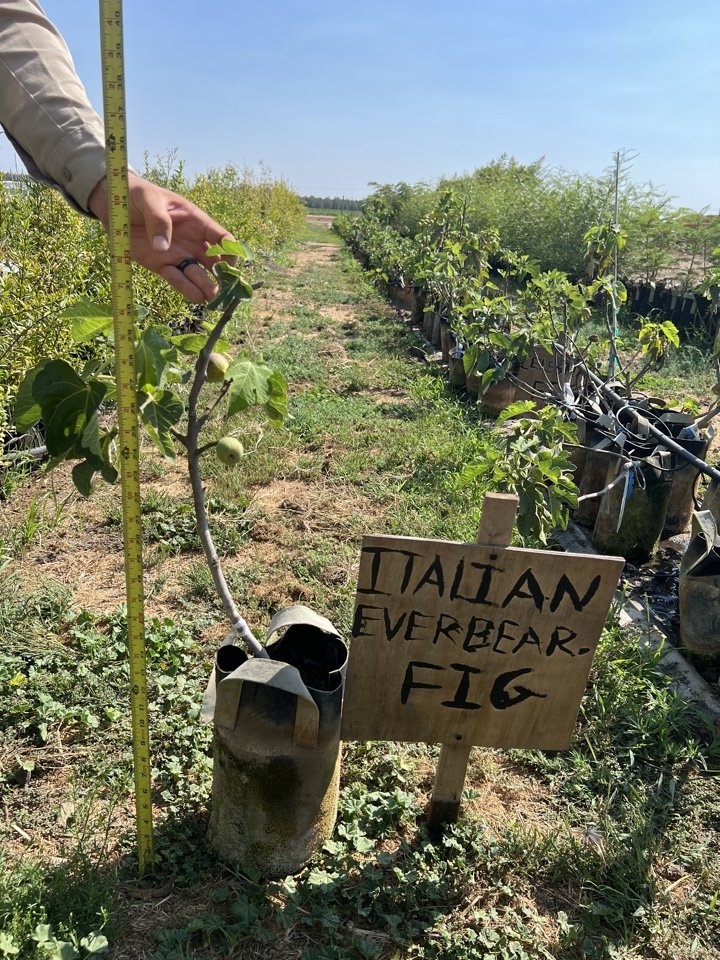
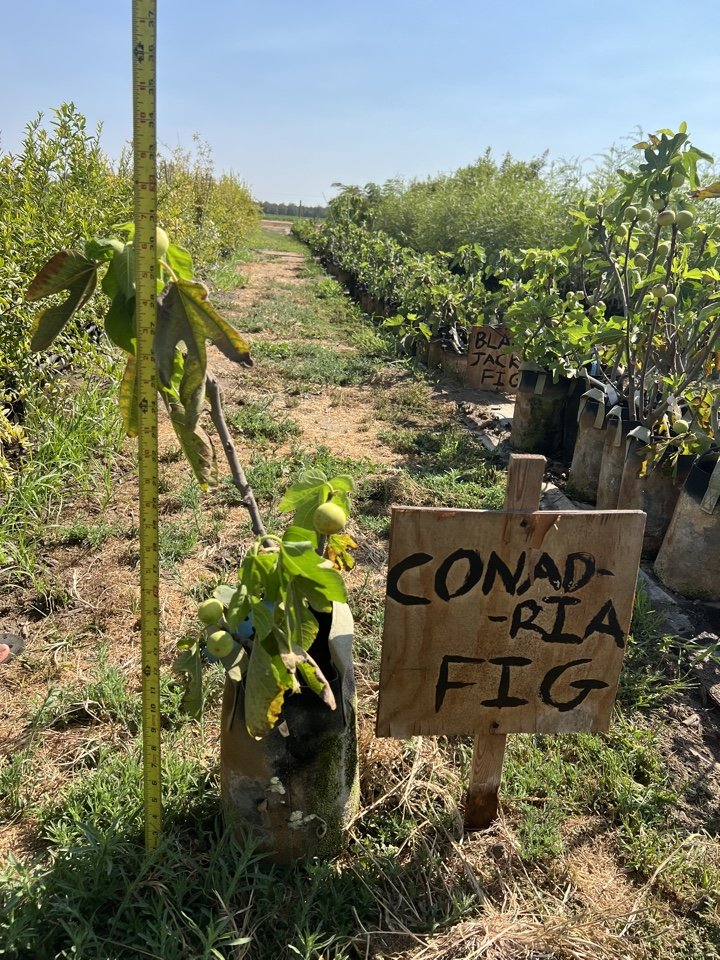

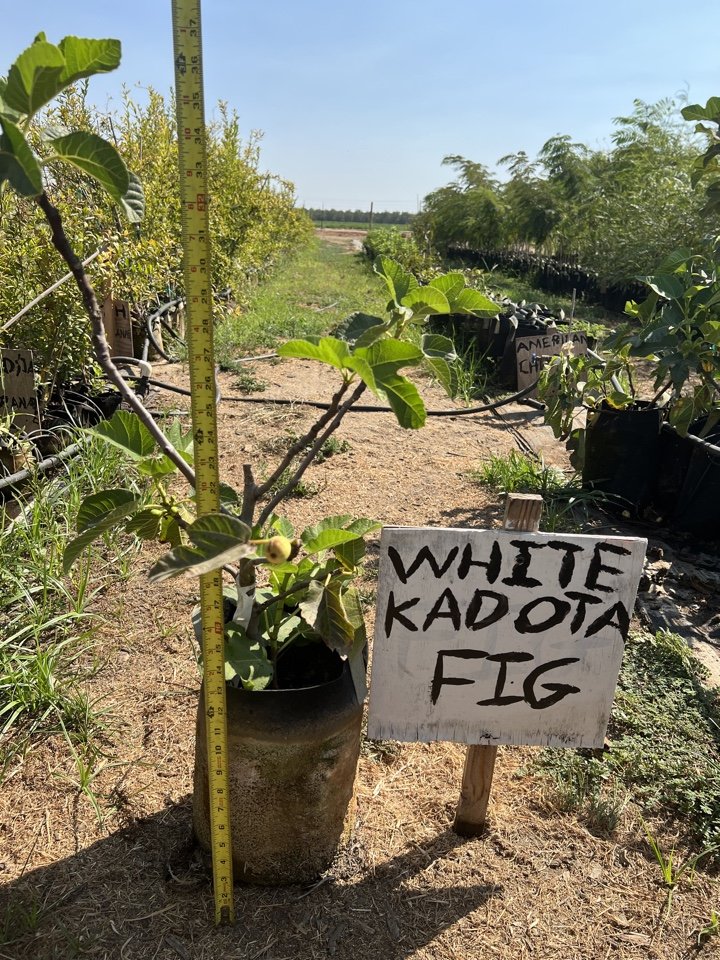

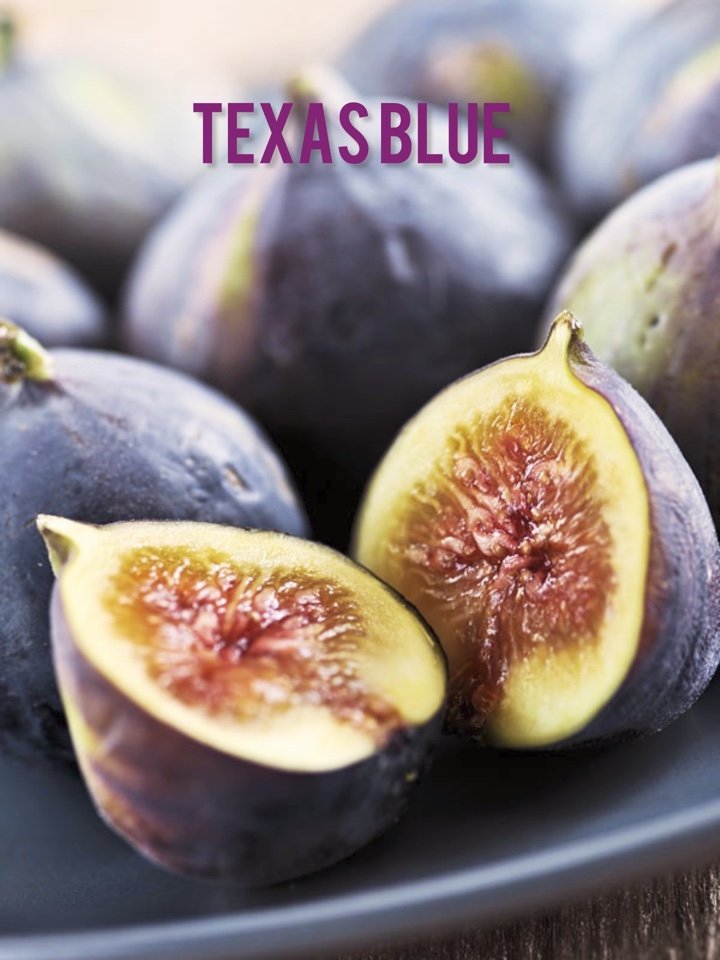
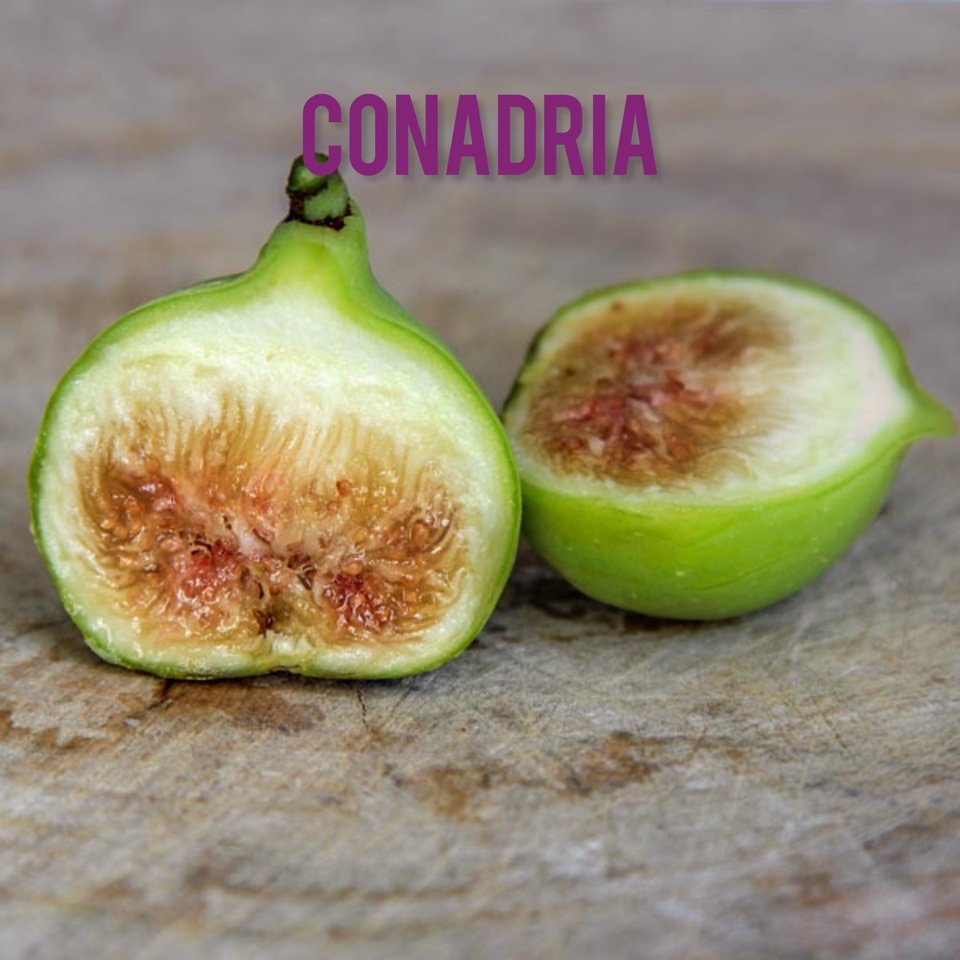
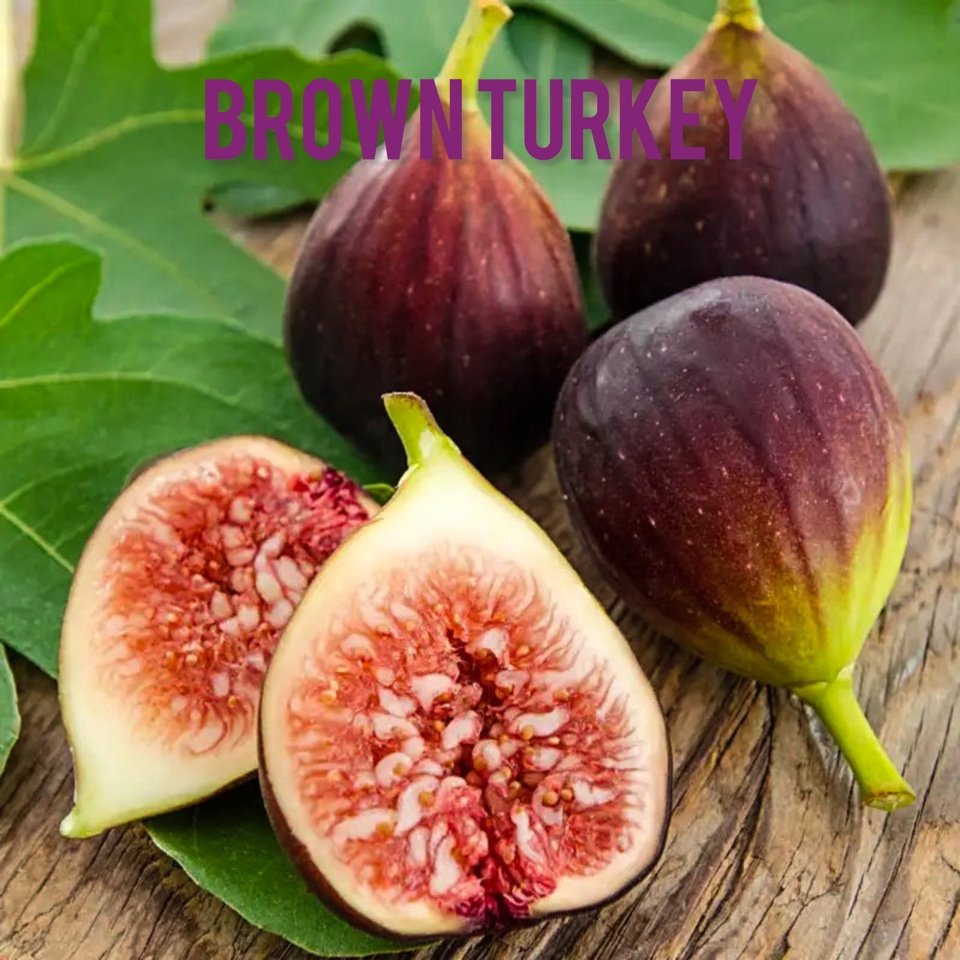
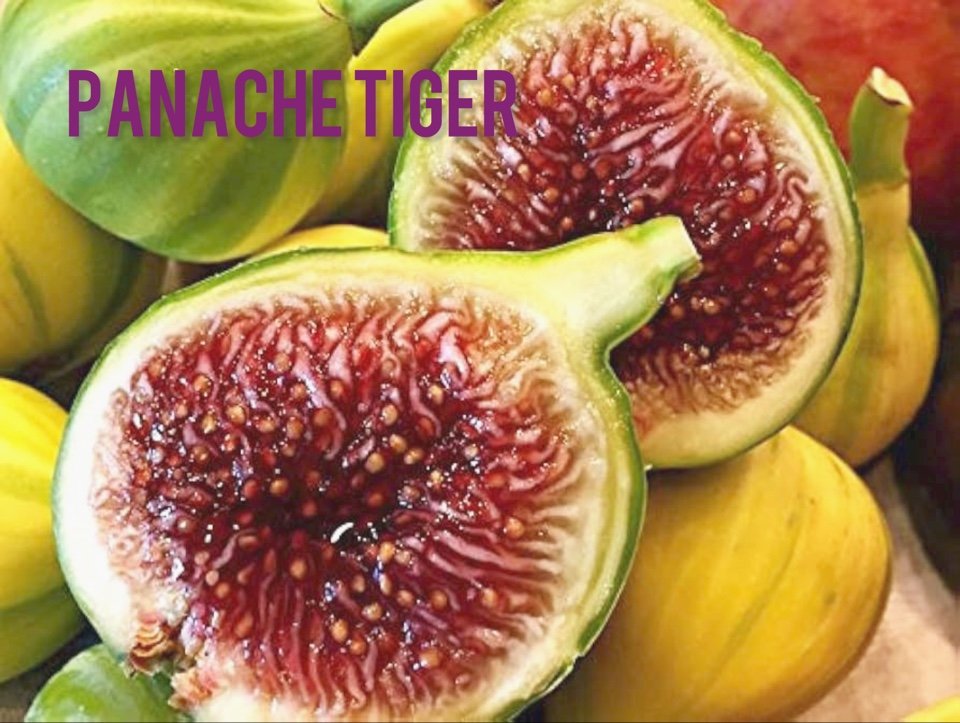
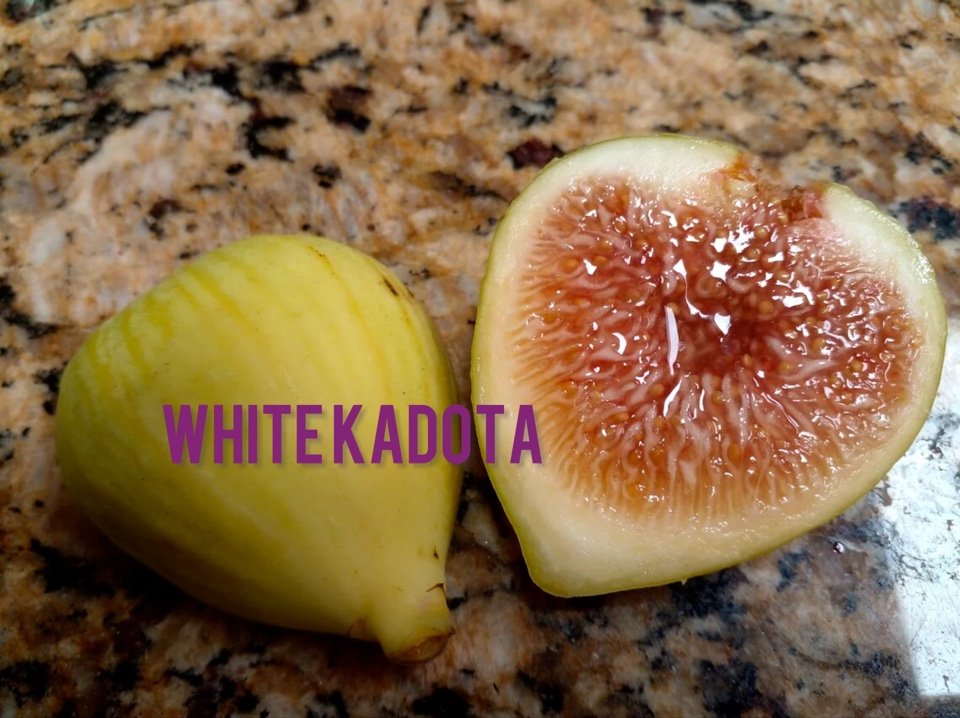
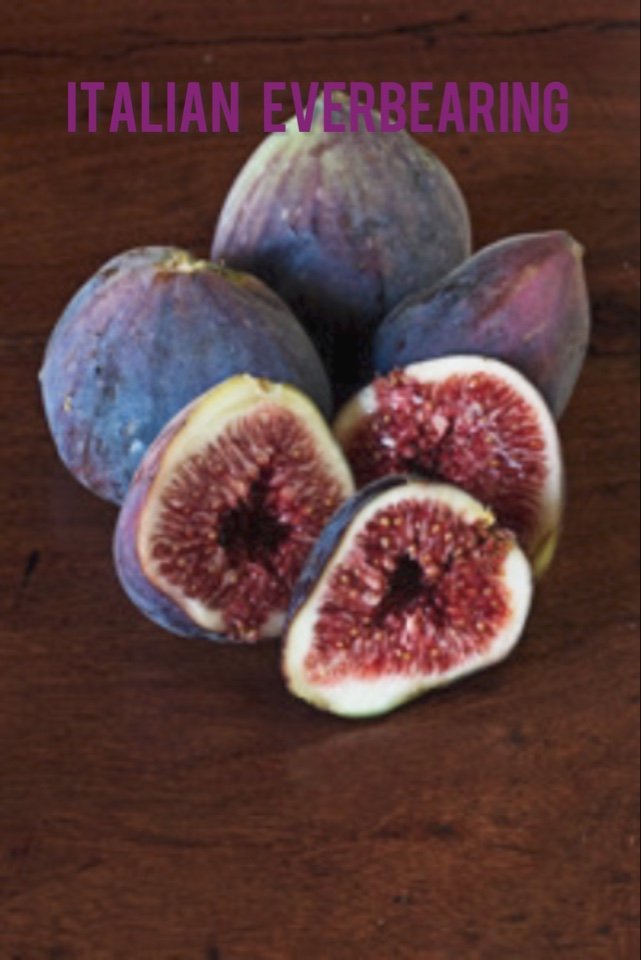


Fig Tree
Fig trees are highly drought resistant and produce delicious fruit. They make a wonderful shade tree as well. Did you know the deepest living plant root ever found was from a Fig tree in the Syrian desert?
Our plants allow you to enjoy fruit in the first year or so. All the Fig trees we offer are vegetatively propagated from healthy, vigorous, fruit producing mother stock, grown right here in our nursery. This means, you receive an exact clone, true in form and flavor and won’t have to wait four to five years to enjoy fresh homegrown fruit, as is often the case with seed grown or tissue culture plants. Truly a better tree!
You will receive an actual tree in a cloth pot. We grow our own plants and seeds at our family farm using organic practices only.
We also include instructions on how to properly take care of your new plant in each order.
Fire Ag Nursery is a Certified Nursery located in Tulare, CA.
Conadria figs have a rose-pink flesh with distinctive full-bodied flavor. The fruit is medium in size, pale green, and great for table use or drying. Conadria fig trees are productive, very vigorous, long-lived and resists spoilage. The Conadria fig variety bears heavily inland and coastal; often fruits twice a year.
Black Jack is an attractive garden tree has an interesting winter appearance and produces especially sweet, elongated purple fruit in the summer. The semi-dwarf form makes it a good choice where space is limited. Highly adaptable. Figs are often hardy and prolific in zones 5 and 6 if planted in a sheltered location.
Celestial figs are smaller, sweeter figs perfect for canning or preserves. These figs ripen in early summer and stay on the tree longer. They also resist spoilage. The fruit is a violet or purple-brown color with white flesh. They reach a mature height of 20-25 feet. The tree is self-pollinating.
Brown Turkey Fig trees are known for producing medium sized sweet fruit that ripens to a brown, reddish-purple color. This variety is known for being an all-around quality fig, enjoyable for eating and good for preserving, making it one of the favorite fig trees for home gardeners. This is the perfect plant to accent your patio—with the bonus of fresh figs! Enjoy attractive flat, lobed leaves and tear-dropped shaped green fruit that darkens when ripe. Planting in containers will allow this fig to be grown in cooler hardiness zones, as long as the fig is brought indoors during the winter months.
Italian Everbearing is a prolific fig variety that will produce multiple crops of figs during the warm growing season. In frost-free climates, it will continually produce year round. Italian Everbearing fig trees have a pronounced "bush" growth habit and will continually produce additional limbs from the base of the tree. These can be pruned to keep the tree smaller, or you can allow it to spread if you'd like. Italian Everbearing is a sugar fig that tastes similar to Brown Turkey figs, but the figs are larger than the typical medium-sized Brown Turkey figs. The sugary flavor in these figs make them a great option for jellies or making fig preserves. They're also absolutely delicious when eaten raw right off the tree!
White Kadota figs are large and oval-shaped, with a green or yellow-green skin and a pink or amber flesh that is sweet and juicy. They are a popular variety for eating fresh, as well as for use in baking, preserving, and other culinary applications. The figs have a skin that is easy to peel and a rich, sweet flavor that makes them a favorite among fig lovers. Kadota fig trees are hardy and adaptable and can grow well in various climates, though they do require a long, warm growing season to produce a good crop of fruit. They are also known for their resistance to certain diseases, such as fig rust and fig mosaic virus.
Texas Blue figs have stupendous sturdy twisting branches host a crop of the largest most spectacular figs you will ever see. Striking green stem tops radiate down into in to a smooth deep violet skin coloration with a deep honey sweet interior.
Panache Tiger Fig is one of the most aesthetically pleasing fig trees. The cute small-medium sized fruits are yellow and covered in green variegation like tiger stripes! The strawberry colored flesh on the inside is sweet and tasty. Get this plant in a warm sunny location for best results and to really show off the fruits charm in late summer/ early fall. The Panache Tiger Stripe Fig Tree thrives with approximately 100 hours of chilling and self-pollinates. It thrives in USDA Zone 8-9, making it a perfect addition to gardens and orchards.
Fig Tree
Fig trees are highly drought resistant and produce delicious fruit. They make a wonderful shade tree as well. Did you know the deepest living plant root ever found was from a Fig tree in the Syrian desert?
Our plants allow you to enjoy fruit in the first year or so. All the Fig trees we offer are vegetatively propagated from healthy, vigorous, fruit producing mother stock, grown right here in our nursery. This means, you receive an exact clone, true in form and flavor and won’t have to wait four to five years to enjoy fresh homegrown fruit, as is often the case with seed grown or tissue culture plants. Truly a better tree!
You will receive an actual tree in a cloth pot. We grow our own plants and seeds at our family farm using organic practices only.
We also include instructions on how to properly take care of your new plant in each order.
Fire Ag Nursery is a Certified Nursery located in Tulare, CA.
Conadria figs have a rose-pink flesh with distinctive full-bodied flavor. The fruit is medium in size, pale green, and great for table use or drying. Conadria fig trees are productive, very vigorous, long-lived and resists spoilage. The Conadria fig variety bears heavily inland and coastal; often fruits twice a year.
Black Jack is an attractive garden tree has an interesting winter appearance and produces especially sweet, elongated purple fruit in the summer. The semi-dwarf form makes it a good choice where space is limited. Highly adaptable. Figs are often hardy and prolific in zones 5 and 6 if planted in a sheltered location.
Celestial figs are smaller, sweeter figs perfect for canning or preserves. These figs ripen in early summer and stay on the tree longer. They also resist spoilage. The fruit is a violet or purple-brown color with white flesh. They reach a mature height of 20-25 feet. The tree is self-pollinating.
Brown Turkey Fig trees are known for producing medium sized sweet fruit that ripens to a brown, reddish-purple color. This variety is known for being an all-around quality fig, enjoyable for eating and good for preserving, making it one of the favorite fig trees for home gardeners. This is the perfect plant to accent your patio—with the bonus of fresh figs! Enjoy attractive flat, lobed leaves and tear-dropped shaped green fruit that darkens when ripe. Planting in containers will allow this fig to be grown in cooler hardiness zones, as long as the fig is brought indoors during the winter months.
Italian Everbearing is a prolific fig variety that will produce multiple crops of figs during the warm growing season. In frost-free climates, it will continually produce year round. Italian Everbearing fig trees have a pronounced "bush" growth habit and will continually produce additional limbs from the base of the tree. These can be pruned to keep the tree smaller, or you can allow it to spread if you'd like. Italian Everbearing is a sugar fig that tastes similar to Brown Turkey figs, but the figs are larger than the typical medium-sized Brown Turkey figs. The sugary flavor in these figs make them a great option for jellies or making fig preserves. They're also absolutely delicious when eaten raw right off the tree!
White Kadota figs are large and oval-shaped, with a green or yellow-green skin and a pink or amber flesh that is sweet and juicy. They are a popular variety for eating fresh, as well as for use in baking, preserving, and other culinary applications. The figs have a skin that is easy to peel and a rich, sweet flavor that makes them a favorite among fig lovers. Kadota fig trees are hardy and adaptable and can grow well in various climates, though they do require a long, warm growing season to produce a good crop of fruit. They are also known for their resistance to certain diseases, such as fig rust and fig mosaic virus.
Texas Blue figs have stupendous sturdy twisting branches host a crop of the largest most spectacular figs you will ever see. Striking green stem tops radiate down into in to a smooth deep violet skin coloration with a deep honey sweet interior.
Panache Tiger Fig is one of the most aesthetically pleasing fig trees. The cute small-medium sized fruits are yellow and covered in green variegation like tiger stripes! The strawberry colored flesh on the inside is sweet and tasty. Get this plant in a warm sunny location for best results and to really show off the fruits charm in late summer/ early fall. The Panache Tiger Stripe Fig Tree thrives with approximately 100 hours of chilling and self-pollinates. It thrives in USDA Zone 8-9, making it a perfect addition to gardens and orchards.
